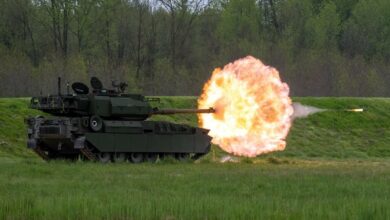US Congress Freezes $349M Budget for IVAS Next-Gen Goggles
The US Congress is withholding nearly $350 million to procure the Integrated Visual Augmentation System (IVAS) next-generation goggles for the US Army.
The fiscal year 2022 budget documents show that the acquisition money has been frozen until initial testing and evaluation are complete.
American lawmakers expect to receive an updated IVAS development plan from an army acquisition agency responsible for prototyping, procuring, and fielding military equipment.
Congress has requested further briefing on the overall details of the program.
Issues
A military version of Microsoft’s HoloLens, the IVAS is a futuristic combat goggle supposed to “revolutionize” how soldiers train, operate, and receive information on the battlefield.
However, even before its official deployment, the US Army has already experienced several issues with the technology.
Last year, the service announced that it was postponing the fielding of the IVAS goggles after an issue with the device’s wider “field of view” was detected.
The developers found that the equipment loses resolution when sight is widened for peripheral vision.
US Army Secretary Christine Wormuth admitted last month that the first IVAS goggles might not be as streamlined as the service initially wanted.
“Remember early satellite phones from the 1980s that wealthy people had in their cars? They were big and clunky and now we have iPhones,” the secretary explained. “It took us some time to get there.”

‘Far From Dead’
Despite the issues surrounding IVAS development, the US Army said it remains committed to getting the “best equipment in the hands of our soldiers as quickly as possible.”
The delay will reportedly allow developers to enhance the IVAS platform further, ensuring soldiers achieve overmatch in multi-domain operations.
“Up until this point, IVAS has really been focused on the dismounted soldiers and getting that fighting goggle right,” Maj. Kevin Smith said in a statement.
“So, in parallel, we in the Night Vision Electronic Sensors Directorate have been working to build-in applications to leverage both new and existing sensors on the vehicles.”
The US Army explained that fixing the goggles will require “a little more time,” but it is targeting deployment six to 10 years ahead of traditional acquisition program timelines.












